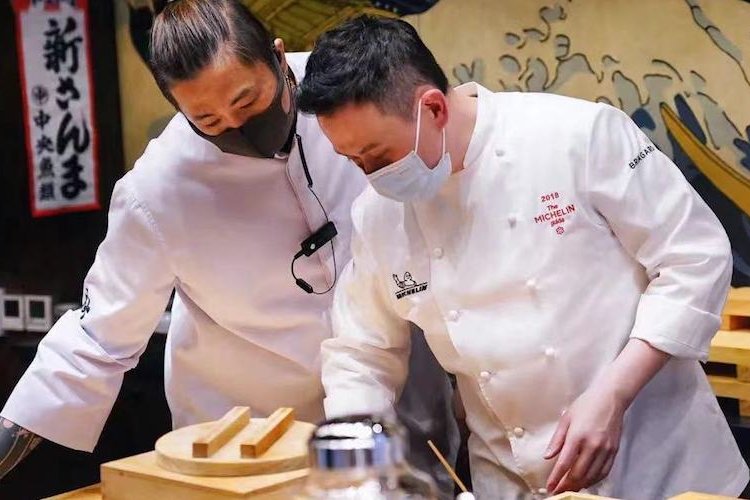Taking a Bite Out of Shark Fin Soup
Ten years ago, talking about reducing the consumption of shark fin soup was a fool’s errand. Sharks were man-eaters, they should be eradicated anyway, and besides, there were lots of them out there. The soup had health benefits. Serving it at weddings and banquets was a Chinese tradition.
But as of this summer, shark fin consumption is down between 70 and 90 percent, according to wildlife conservation groups including World Wildlife Fund Hong Kong. How did the situation change so quickly? The answer lies with a basketball player and a public austerity campaign, along with shifting public opinion on the treatment of animals in China.
As many as 73 million sharks are killed each year, with China representing the biggest market. The sharks are usually caught on long lines, and then hauled onto fishing boats, where their dorsal (back), pectoral (side), and tail fins are cut off. Because the rest of the fish is not harvested or used, mutilated sharks are then usually thrown back into the ocean to drown, unable to swim or otherwise move, to save space on the boats for more fins. After drying, the fins are sold to distributors or directly to restaurants, who then make it into soup. The chewy, crunchy fin matter has no flavor, and the soup itself is usually chicken broth. Although viewed by some practitioners of traditional Chinese medicine as a cancer cure, no value in cancer treatment has been proven scientifically. In fact, sharks’ position in the food chain as apex predators means that the fins often contain high levels of mercury, which can cause sterility.

The tide of public opinion on shark fin consumption turned in 2009, when NBA star Yao Ming appeared in a public service announcement in both Chinese and English on behalf of anti-wildlife product trafficking organization WildAid. In the 30-second spot, diners in a restaurant see a shark in an aquarium bleeding from where its fins had been cut off.
“I’ve been opposing the consumption of shark fin since 2006, and we’ve made good progress, you can see that the numbers have come down. The next step is to expand that to other areas, like elephants and ivory, and hopefully we’ll have similar success there,” Yao told the Bejiinger in an interview.
Yao’s public entrance into the debate made it acceptable not only to discuss the issue openly, but also to take action. Instead of automatically serving shark fin at their wedding, young people began to make other menu choices, ones that their peers would accept, although perhaps not their grandparents yet.
The other key event in the fight to reduce shark fin consumption came in July 2012, when China’s central government announced a three-year phase-out of shark fin nationwide. That order was given further force when in December 2013, the government banned the dish from being served at any official banquet as part of its continuing drive against extravagant public expenditure.
“This sends out a really positive message. We are now working with universities to reach out to the private sector to see if they will align themselves with the government,” said Lei Chen Wong, executive director of the Jane Goodall Institute China, whose Roots & Shoots program has taken up the shark fin fight as one of its primary causes.
At present, the list of companies dissociating themselves from shark fin include Hilton Worldwide, Peninsula Hotels, Shangri-La Hotels and Resorts, Starwood Hotels, and Swissotel; airlines like Air Pacific (Fiji), Asiana, Cathay Pacific Airlines, Cebu Pacific Air, Dragonair, and Korean Air, which refuse to carry shark fin as cargo; and companies like Alibaba, which restricted the sale of shark fin and related products on its site in 2009.
Photos: Courtesy of Wildaid, Paul Hilton, Mitchell Pe Masilun









